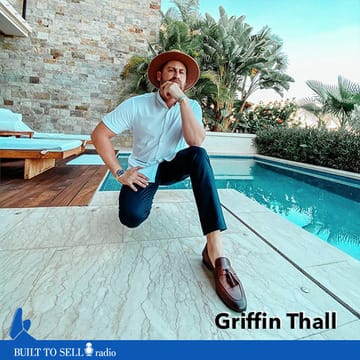About this episode
Griffin Thall and Paul Goodman, two Southern California friends traveling through Costa Rica on a post-college graduation trip in 2010, crossed paths with two bracelet artisans, Jorge and Joaquin, who were living in poverty. Jorge and Joaquin made beautiful, colorful handmade bracelets that seemed to capture the essence of their journey. Thall and Goodman asked the artisans to make 400 bracelets to take home with them.
To read a transcript of this episode, click here.
Griffin Thall and Paul Goodman, two Southern California friends traveling through Costa Rica on a post-college graduation trip in 2010, crossed paths with two bracelet artisans, Jorge and Joaquin, who were living in poverty. Jorge and Joaquin made beautiful, colorful handmade bracelets that seemed to capture the essence of their journey. Thall and Goodman asked the artisans to make 400 bracelets to take home with them.
Upon returning to San Diego, the partners got to work selling their bracelets. They built a simple website and took orders online. They promoted their lifestyle brand on social media and got well known influencers to ware their bracelets.
Over the next nine years, the partners-built Pura Vida into a $68 million company with supply continuing to come from Jorge and Joaquin who now employ more than 1,000 people. The amazing growth of Pura Vida culminated in a sale process which attracted 25 bidders in 2019.
Twenty two of the 25 suitors were from private equity groups while three were from strategic acquirers (i.e. other brands). After a round of management meetings, six of the private equity groups and one strategic acquirer made formal offers.
As is often the case, the bids from private equity were focused on the numbers and required the partners put a larger share of their money “at risk” based on the future performance of the company. By contrast, Vera Bradley was willing to pay roughly 75% of the money up front and offered the partners years of experience building lasting brands.
In July 2019 Vera Bradley announced their acquisition of a 75% stake in Pura Vida Bracelets for $75 million in cash plus a $22.5 million earn out which equates to a little more than 9 times that year’s adjusted EBITDA.
Listen to the entire episode and learn:
- How Thall & Goodman created a subscription model (and why it worked)
- How the partners built a brand ambassador program on campuses across America eventually topping out at more than 100,000 guerilla marketers promoting the brand
- The typical differences between an offer from a private equity group and strategic acquirer
- The trophy Thall bought himself after the sale
- How to create a persona to help employees imagine their customer
Pura Vida created a novel subscription program which offered loyal customers a new selection of bracelets and other goodies each month. At the time of the Vera Bradley acquisition, Pura Vida had more than 15% of its revenue coming from recurring revenue. If you’re trying to figure out your subscription model, a Certified Value Builder™ can help. Fill out the form here and we’ll get you matched up with an advisor in your area.
Thall and Goodman held 100% of their equity in Pura Vida at the time of their exit which is a hallmark of a different kind of owner we call a “Value Builder”. These Value Builders prioritize building wealth over personal recognition and often turn down outside investment for fear of diluting their equity. Learn more about how these Value Builders think by downloading your copy of the ebook Famous or Rich: 9 Ways Value Creators Prioritize Wealth Over Recognition.

About Our Guest
Griffin Thall is the Co-Founder and CEO of Pura Vida Bracelets. Since launching the brand in 2010, Thall has established himself as a leader in growth and content marketing and helped grow Pura Vida into a multi-million dollar company with over 1.9 million followers on Instagram, providing jobs to more than 800 artisans around the globe and raising more than $1.9 million for charitable causes. Pura Vida Bracelets has been featured on Inc.’s list of “5,000 Fastest Growing Companies in America,” and Thall was also included in Forbes’ 2015 “30 Under 30” list.


